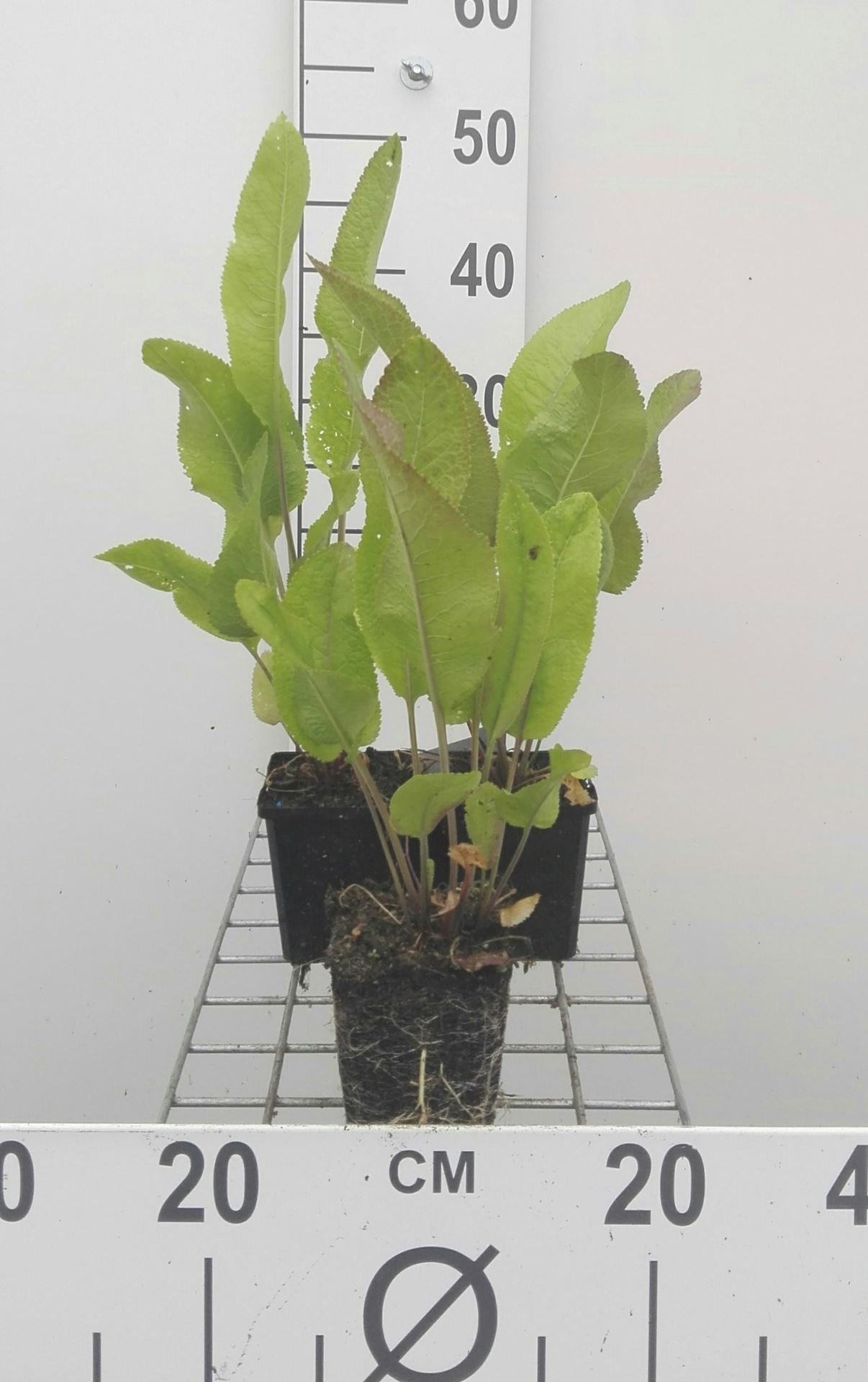Horseradish - pot 9x9 cm (Armoracia rusticana)
Mierikswortel
Product information "Horseradish - pot 9x9 cm (Armoracia rusticana)"
Horseradish is best planted in a bottomless pot or a spot where it is allowed to proliferate
CULTIVATION TIPS:
Horseradish is perennial, hardy and very strong and tough. So it is very important to give it the right place in the herb garden, either in a place where it is allowed to proliferate or in a tub that you bury in the ground. If you want to get rid of it, you have to make sure that every piece of the root has been harvested, otherwise it will keep coming back
USES:
Horseradish has a distinctively strong flavor. Use the root in spicy sauces, marinades and with meat and fish dishes.
You can also enjoy its flavor in vinegar, mustard, mayonnaise and cream sauce.
Horseradish benefits digestion and blood circulation. In addition, the root contains a good portion of vitamin C and is a natural antibiotic. It loosens mucus and offers help for asthma and lingering cough.
For an infection of the airways you can use horseradish syrup. You can easily make this yourself by mixing 100 grams of freshly ground horseradish with 50 grams of honey or cane sugar. Let this rest for a few hours in a sealed jar and your syrup is ready. Or you can make an infusion of horseradish by bringing 20 grams of freshly grated root to a boil in 1 liter of water, boil for 5 minutes and rest for 20 minutes. Horseradish also drives off uric acid, making it effective for rheumatism, gout and arthritis. For a radiant complexion, boil 2 teaspoons of freshly grated horseradish in half a liter of milk for 10 minutes. Use this milk both in the morning and in the evening as a cleansing lotion. Be careful with the quantity! After all, an overdose can cause blisters on the skin
If you have been bitten or stung by an insect, rub the bite with horseradish to prevent swelling.
Product specifications
| Application / use plant: | Unknown - n/a |
|---|---|
| Application / use plant - details: | The root is used in salads, etc. |
| Average number per m²: | 5 |
| Bloom Month: | Unknown - n/a |
| Bloom color: | Unknown - N/A |
| Branches / bark: | Unknown - n/a |
| Dutch plant name: | Mierik, Mierikswortel |
| English plant name: | Horse Radish, Horse-radish, Horseradish, Red Cole |
| Flower color - details: | White |
| French plant name: | Cranson |
| Frost hardiness - details: | Very good (-29 till -23°c), usda zone 5 |
| Frost resistance: | Extrême winter hardiness |
| Fruit: | Unknown - n/a |
| Full grown plant height: | 60-100 cm |
| German plant name: | Gewöhnlicher Meerrettich, Meerrettich |
| Growth habit : | Unknown - n/a |
| Growth habit - details: | Woody, rather coarse |
| Humidity/Soil: | Moist soil |
| Latin plant family: | Brassicaceae |
| Leaf / Foliage: | Green, Coarse-leaved |
| Leaf / foliage - details: | Deciduous, green, but frequently with white spots, coarse |
| Location: | Halfshadow, Full sun |
| Location - details: | Sun till half-shade |
| Minimum growing height (in cm): | 75 |
| Plant characteristic: | Edible (fruit, leaf, flower), Indigenous |
| Plant family: | Finial family |
| Planting distance: | 3-6 pieces per m² (40-60 cm apart) |
| Pruning period: | March |
| Synonym / Trade name: | Armoracia lapathifolia, Cochlearia armoracia |
| Winter foliage: | Losing leaf |
| maximal growth height (in cm): | 100 |
| type of crop: | Perennial plant |
| type of soil: | Calcareous soil, Clay soil (calcareous), Normal soil |
| type of soil / ground - details: | Any good garden soil |
| Package dimensions: | 10L x 11W x 24.25H cm |
Pictures of this plant
Reviews
Login













